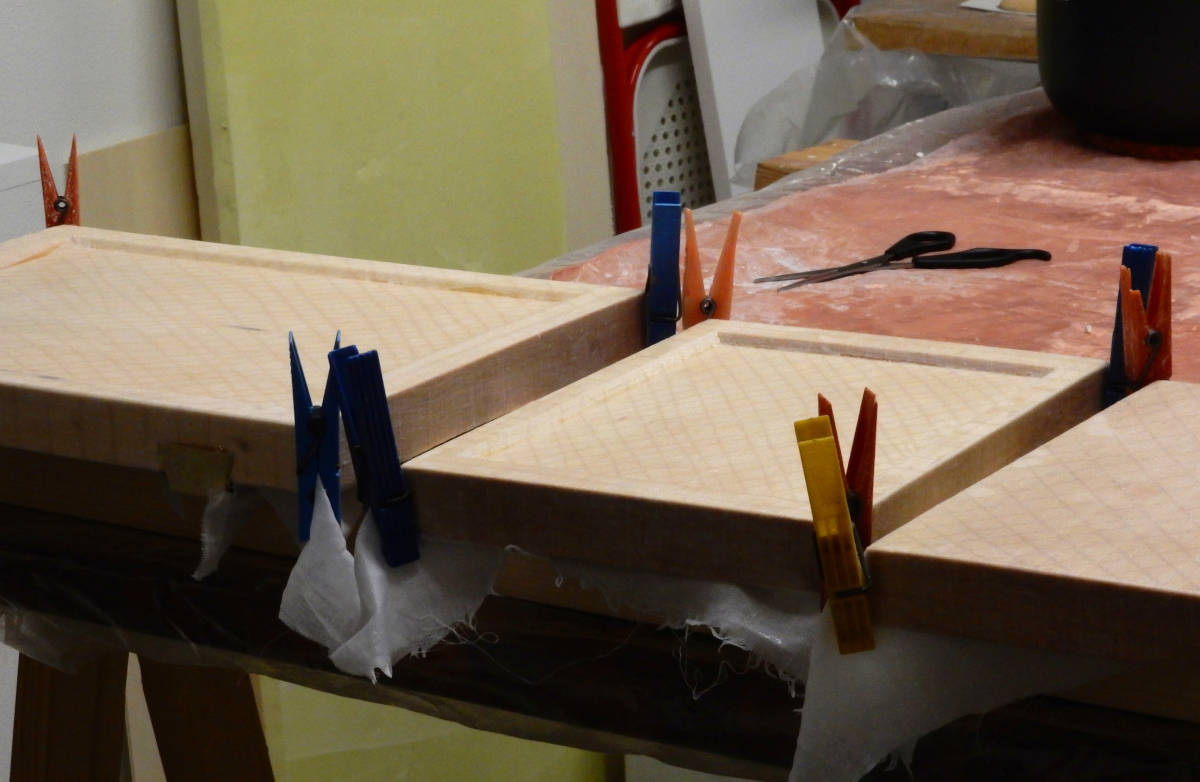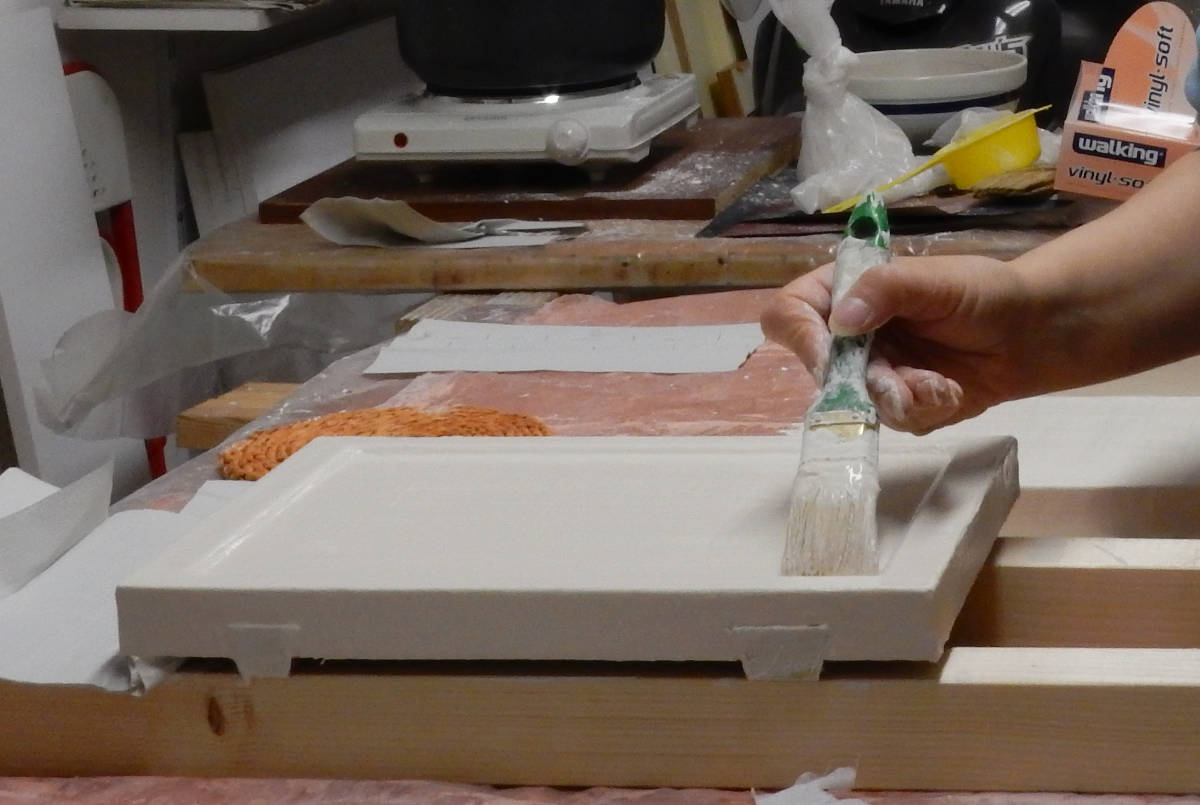Icon painting technique
Applying the linen

Icons are painted on linden wood. The boards are purchased from a specialized carpentry shop. The larger ones have braces on the back to contrast the movements of the wood. Some boards depending on the subject, have the central hollow part (called cradle).
Since paint cannot be appluied directly on wood, surface must be prepared. The first process is applying on it a linen cloth. The linen cloth is soaked in naural glue and then applied on the table. The application of the linen cloth is important because it gives elasticity to the plaster that will be applied on it, avoiding cracks to open even with small movements of the wood.
Chalk

The second step is applying chalk. Bologna or Meudon chalk is used . Both are inert, so that must be mixed it with a solution of water and natural glue. About 15 layers of chalk are applied suing a brush. Once hardened, the plaster is sanded by hand using progressively finer sand-papers. The surface must be particularly homogeneous and smooth, in order to guarantee excellent results both for gilding and tempera paint.
Gilding
For gilding, 24 kt gold leaf is used, applied with the ancient gouache technique, a step above any other teqnique in order to obtain brilliant gilding and also good for graffito making. The gilding process begins with the application of the bolus, which is a mixture of a particularly clayey ground mixed with natural glues. Very important is that bolus must be free from any imperfection. The gold leaf is then applied to the bolus: first, the bolus is made to recover with "gouache", a mixture based on water and glue, immediatly after gold leaf is adhered. At least two layers of gold are applied.
Depending on the kind of affect you want to achive, some areas can be polished with the burnisher, which is a special tool made with agate stone.
Graffito
Graffito is a process carried out with an agate stone tip that sinks gold without tearing it; graffito is possibile only if gilding has been done with gouache tecnique; also is important that the layer of gold is not too thin (at least two layers of gold leaf are needed).
Painting
Icons are painted using egg tempera. Tempera is prepared daily using egg yolk, which is mixed with powder pigments; it is exactly the painting technique used in ancient times, before the advent of oil painting. Egg tempera painting has the characteristic of being quite transparent, which allows you to paint with multiple glazes, executed with pigments of contrasting colors; at the end, the overlaying layers provides the desired color, which has a depth and complexity difficult to achive with other techniques.
Polishing
Polishing is the final phase. Icon is polished with an oil-based mixture which, together with other elements, has the dual function of protecting the tempera paint and, at the same time, making it more brilliant and deep, melting the various pictorial layers. Before polishing, it is necessary to wait, even for months, for the natural paints to have completely stabilized.


